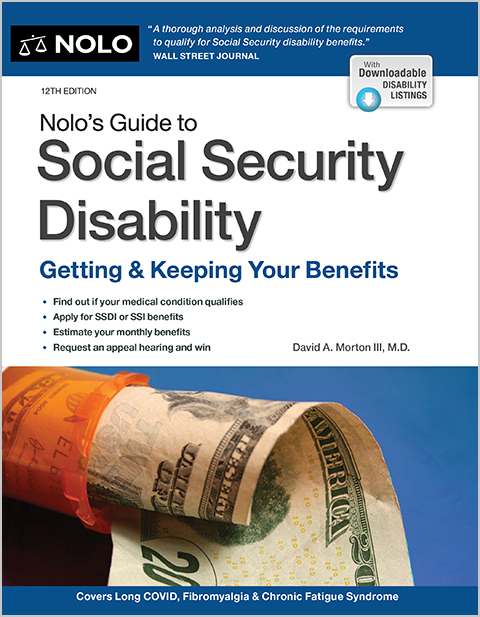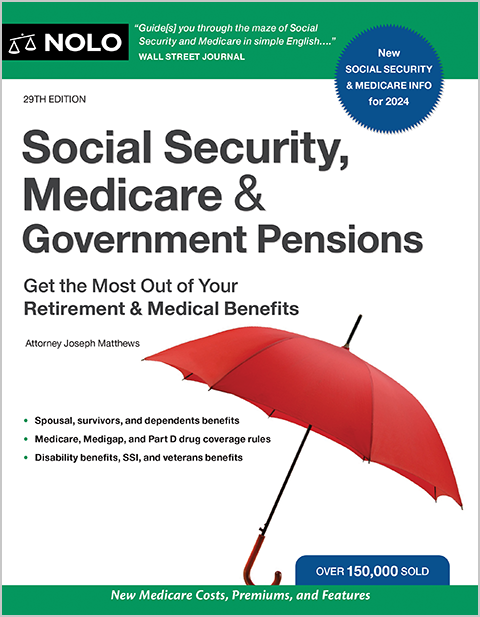Learn about the driving restrictions and license renewal rules for Texas seniors that are aimed at keeping roadways safe in Texas.
More than 600,000 Texas drivers are over 80. And as the state's population ages, the number of drivers in this group is rising faster than in any other. At this rate, Texas will have nearly 2.5 million drivers over 80 by 2050.
While older drivers are often safer drivers, studies show that drivers over 80 are more likely to suffer serious injuries or die in traffic accidents than younger drivers. And as the number of older drivers grows, so does the risk of age-related impairments that can affect driving ability.
To address these concerns, the Texas Department of Public Safety (DPS), which handles driver's license matters, enforces some special requirements and restrictions on older drivers, including requiring:
- more frequent driver's license renewals
- in-person renewals, and
- vision screenings and medical evaluations for license renewal.
The DPS also conducts unsafe driver investigations if a doctor, family member, or other person requests one. The Texas Department of Motor Vehicles (TXDMV) handles vehicle registration, license plates, and disabled placards.
- License Renewal Rules for Older Drivers in Texas
- Possible License Restrictions for Older Texas Drivers
- How to Request an Unsafe Driver Investigation in Texas
- How to Get a Texas Driver's License Reinstated
- How to Get Disabled Parking Placards or License Plates in Texas
- Learn More About Texas Driving Rules for Seniors
License Renewal Rules for Older Drivers in Texas
In Texas, drivers 79 and older have to follow special rules when renewing their licenses.
Texas Requires Older Drivers to Renew Licenses More Often
Most adult drivers in Texas must renew their licenses every eight years. But older drivers must renew more often. How often depends on your age:
- Drivers age 79 to 84 must renew every six years.
- Drivers age 85 and older must renew after two years.
Older Texas Drivers Must Renew Licenses In Person
In Texas, most adult drivers can use remote services for at least every other license renewal. Eligible drivers can renew their licenses via:
- online services at Texas by Texas (TxT)
- telephone renewal at 866-357-3639, or
- renewal by mail (follow the instructions on the renew-by-mail invitation you received).
But under Texas law, drivers 79 and older must renew their licenses in person, for each license renewal. (Tex. Transp. Code § 521.274(b)(3).) Because in-person renewals are by appointment only, you'll need to schedule a renewal appointment at your local license office.
When Do Older Texas Drivers Need a Vision Test?
Anyone renewing a Texas driver's license in person must pass a vision test. So if you're 79 or older, you'll need one every time you renew, while younger drivers only take the vision test at in-person renewals.
Drivers whose eyesight is less than 20/70 with correction or 20/40 without correction will also need to be examined by an outside vision specialist. You'll need to have your optometrist or ophthalmologist complete the Explanation for Eye Specialist (Form DL-63).
Does Texas Require Older Drivers to Take a Driving Test?
Texas doesn't require a written or road test based solely on your age. But if a DPS staff member thinks it's necessary, you might need to take one. Driver's license testing is available in both English and Spanish.
Medical Exam Requirements for Texas Driver's License Renewal
When you complete a driver's license renewal application, Texas requires you to report whether you've been diagnosed with any medical condition (physical or mental) that could affect your ability to drive safely, such as:
- a serious heart condition
- blood clots or strokes
- high blood pressure
- emphysema (within the past two years)
- seizures or blackouts (within the past two years)
- diabetes (requiring insulin therapy), or
- progressive eye disorders (like glaucoma or macular degeneration).
You're also required to report any physical limitations that could affect your ability to operate a motor vehicle, such as a missing limb or the inability to use your fingers.
A DPS specialist will review the medical information on your application and determine if any additional testing or medical certification is required to renew your license.
Possible License Restrictions for Older Texas Drivers
The DPS can place restrictions or conditions on your driver's license if they have a good reason. (Tex. Transp. Code § 521.221.) The most common restriction for older drivers is the requirement to wear corrective lenses (glasses or contact lenses). In Texas, other common restrictions on older drivers can include:
- no highway driving
- no nighttime driving
- requiring another licensed adult driver in the front seat
- limiting driving to speeds under 45 miles per hour
- requiring a hearing aid while driving
- requiring a vehicle equipped with:
- outside mirrors
- an automatic transmission
- power steering, or
- a special mechanical control device (such as hand brakes or a left-side accelerator).
The DPS can also limit driving to a specific route or geographic area, such as only to and from work or within five miles of home.
How to Request an Unsafe Driver Investigation in Texas
The Texas DPS will accept reports about drivers with medical conditions that could affect their ability to safely operate a motor vehicle. Anyone with knowledge of the driver's condition, including family and friends, can submit a report called a "driver examination request."
The DSP only accepts written examination requests, but it does accept anonymous reports (meaning you don't have to sign it). Requests should include the driver's name, birthdate, address, and license number (if known). You'll also need to explain in detail why it's unsafe for the driver to operate a motor vehicle.
You can submit your request as a letter or download and complete an Examination Request (Form DL-76). Send your letter or completed form to the DPS by mail, fax, or email.
Mailing address:
Texas Department of Public Safety
Enforcement and Compliance Service
P.O. Box 4087
Austin, TX 78773-0001
Fax: 512-424-5311
Email: [email protected]
After reviewing an unsafe driver report, the DPS might require the driver to take additional vision, knowledge, or driving tests or have a licensed doctor supply additional medical information.
How to Get a Texas Driver's License Reinstated
For information on how to get back a license the Texas DSP has suspended or revoked, contact any driver's license office throughout the state. You can also learn more on the DSP's license reinstatement information page.
How to Get Disabled Parking Placards or License Plates in Texas
The Texas Department of Motor Vehicles (DMV) oversees vehicle registration and license plates. The DMV also issues disabled parking placards and license plates to Texas residents with impaired vision or mobility, if a licensed healthcare provider certifies the condition.
Both the placards and plates entitle you to park free at local and state parking meters, although time limits might still apply. Disabled parking placards and plates are only valid when used by the driver with a qualified disability or someone driving the person with a qualified disability.
Texas offers both temporary disability parking placards and permanent disability parking placards and license plates. Temporary placards are valid for up to six months, while permanent placards must be renewed every four years, and disabled parking plates are renewed like other license plates.
To qualify for a disabled placard or plates, you must meet the state's definition of disabled. To meet the definition with a visual disability, you must have visual acuity of:
- 20/200 or less in the better eye while wearing correcting glasses or contact lenses, or
- more than 20/200, but with a limited field of vision in which the widest diameter of the visual field subtends an angle of 20 degrees or less.
Those with physical limitations can qualify for a disabled parking placard or plate if they:
- can't walk 200 feet without stopping to rest
- can't walk without using or getting help from a brace, cane, crutch, prosthetic device, wheelchair, or another assistive device or person.
- are severely restricted by lung disease
- use portable oxygen
- have a severe cardiac condition
- have a debilitating arthritic, neurological, or orthopedic condition, or
- have a foot disorder or other condition that severely limits the ability to walk.
To get a disabled parking placard or plate, complete the following steps:
- Complete and sign an Application for Persons With Disabilities Parking Placard and/or License Plate (Form VTR-214).
- Have a licensed physician, podiatrist, optometrist, physician's assistant, or advanced practice nurse complete the disability statement portion of the form.
- Include a fee of $5 for a parking placard for a temporary condition; permanent plates and placards are free.
- Mail the original application to the address on the form.
To renew your permanent placard, you'll need to complete the affidavit portion of a new application, sign it, and submit it along with a copy of your original application to your county tax office. If your temporary placard is expiring and you want a permanent placard, you'll need to follow the instructions above to complete a new application for a permanent placard.
Learn More About Texas Driving Rules for Seniors
Websites run by both the Department of Public Safety (DPS) and the Department of Motor Vehicles (DMV) contain a wealth of information for Texas drivers, including links to the controlling laws.
Of special interest is the downloadable Texas Driver's Handbook in English or Spanish, which includes information on licenses, registering vehicles, and rules of the road.
Talk to a Lawyer
Need a lawyer? Start here.
How it Works
- Briefly tell us about your case
- Provide your contact information
- Choose attorneys to contact you
- License Renewal Rules for Older Drivers in Texas
- Possible License Restrictions for Older Texas Drivers
- How to Request an Unsafe Driver Investigation in Texas
- How to Get a Texas Driver’s License Reinstated
- How to Get Disabled Parking Placards or License Plates in Texas
- Learn More About Texas Driving Rules for Seniors
- Briefly tell us about your case
- Provide your contact information
- Choose attorneys to contact you


